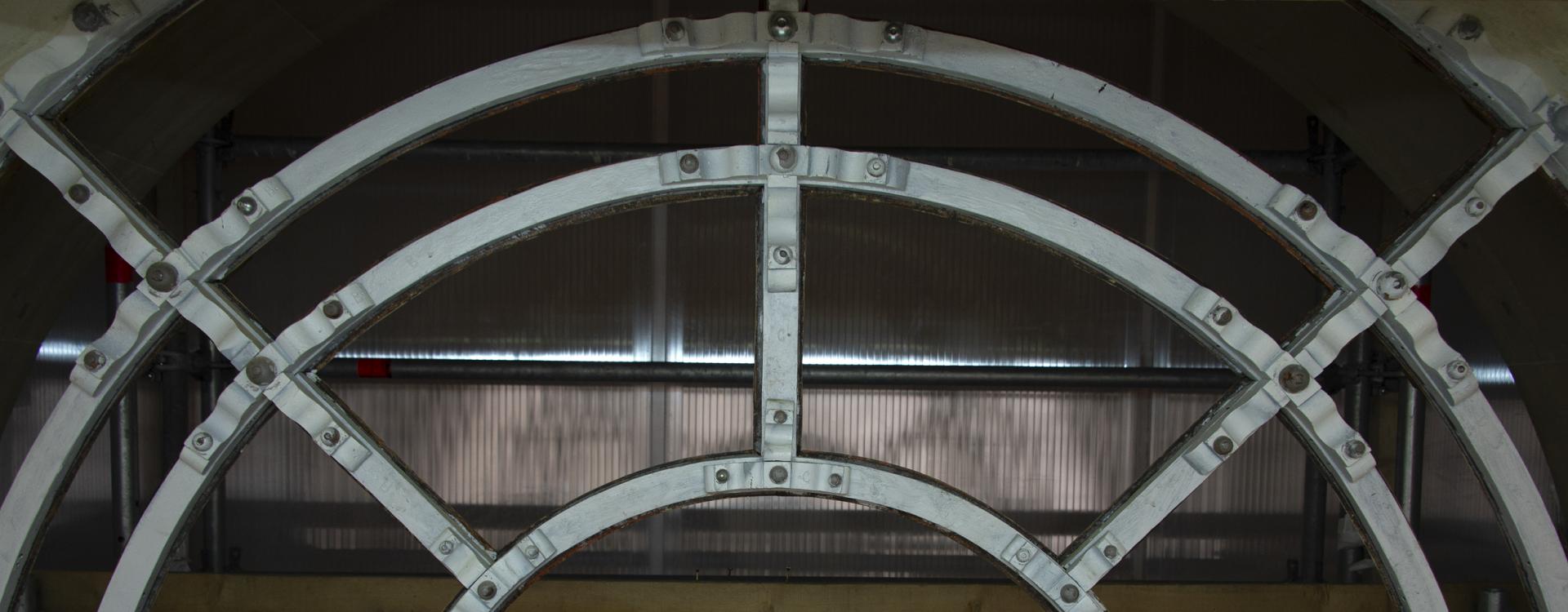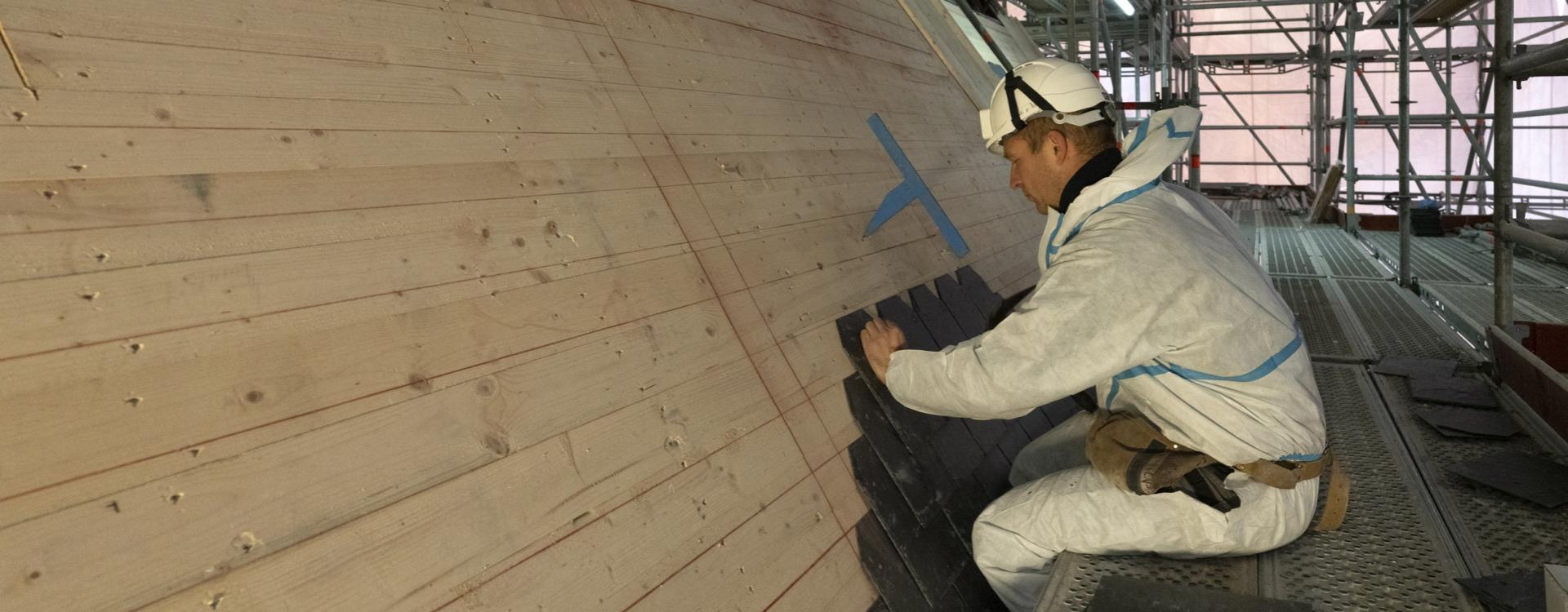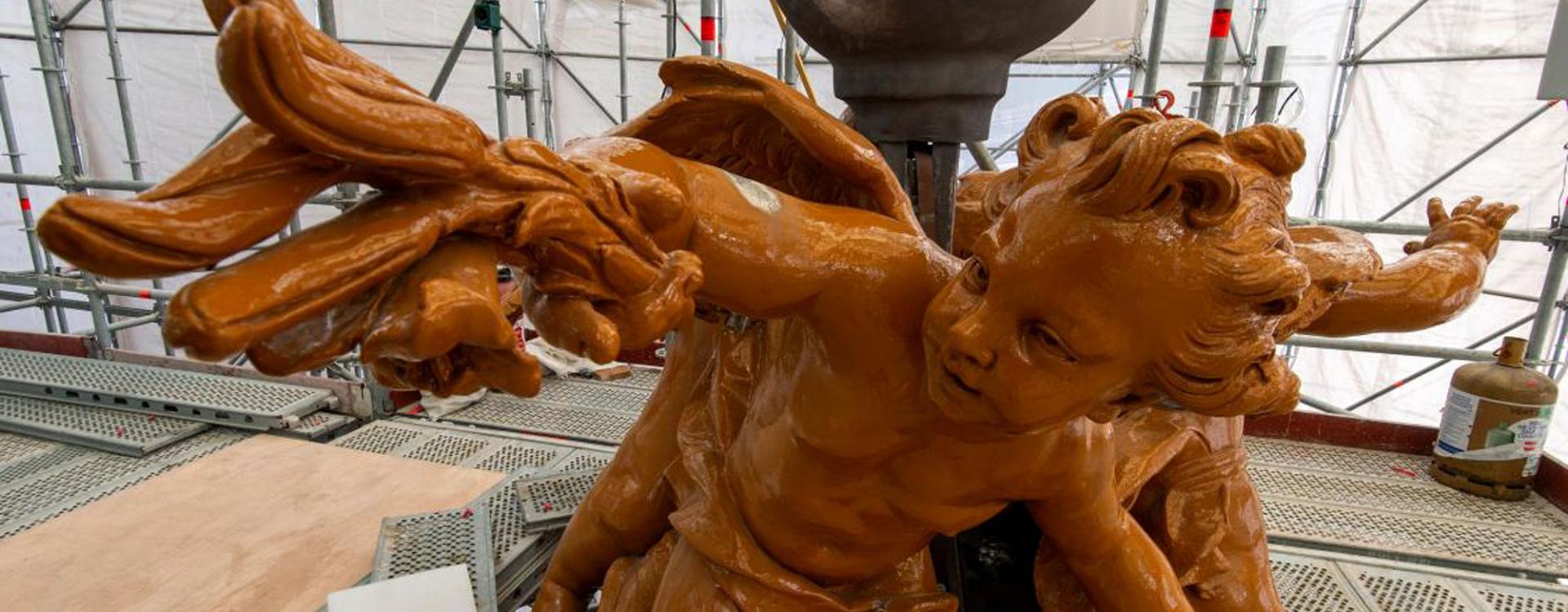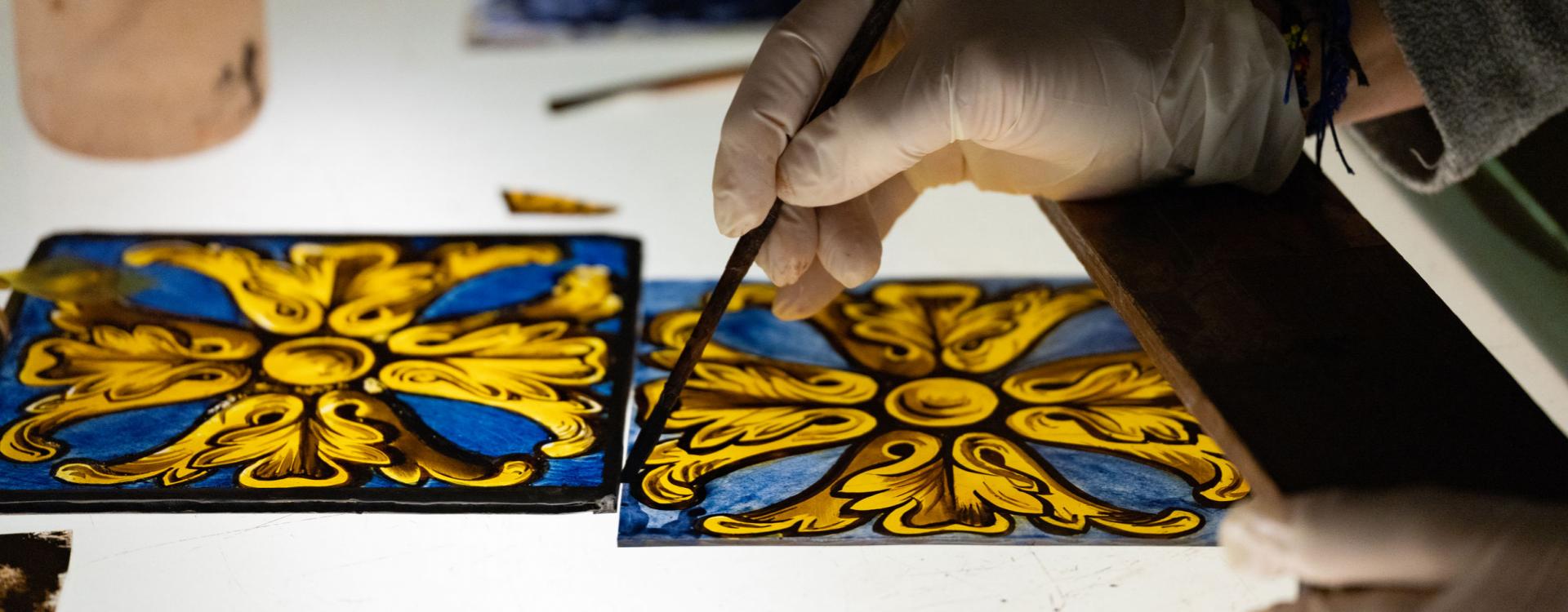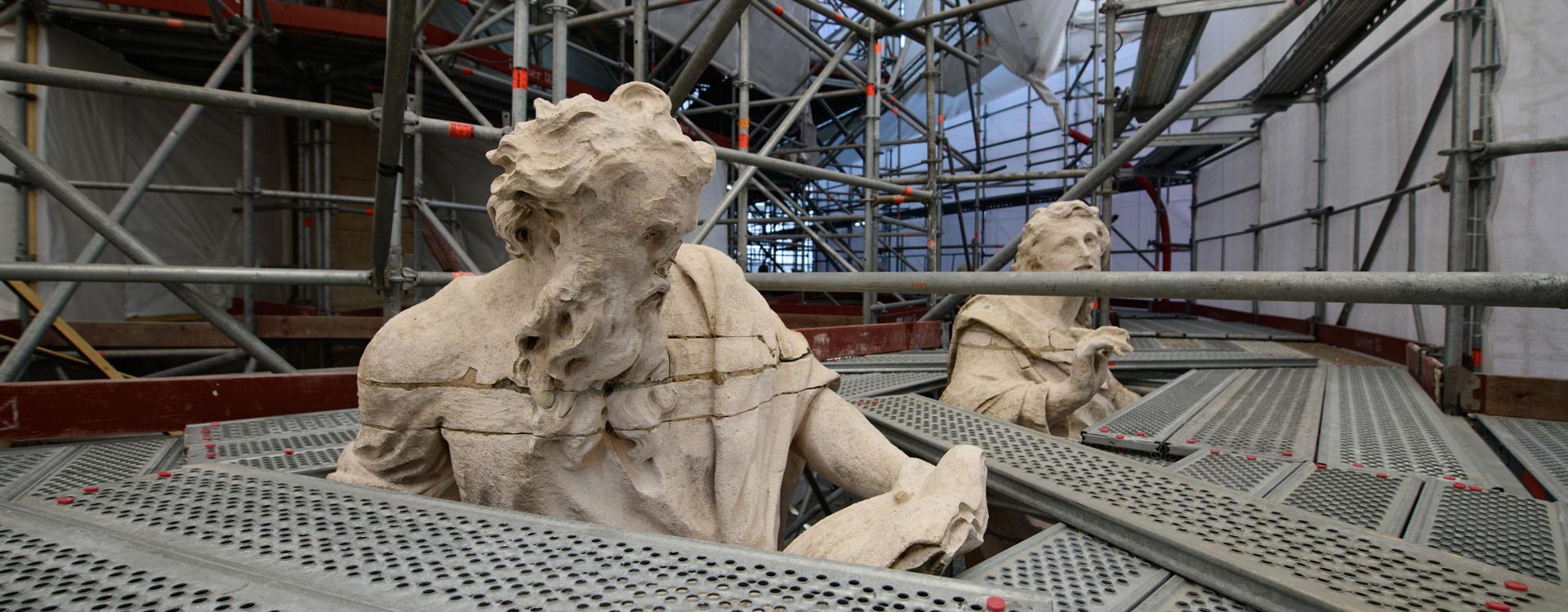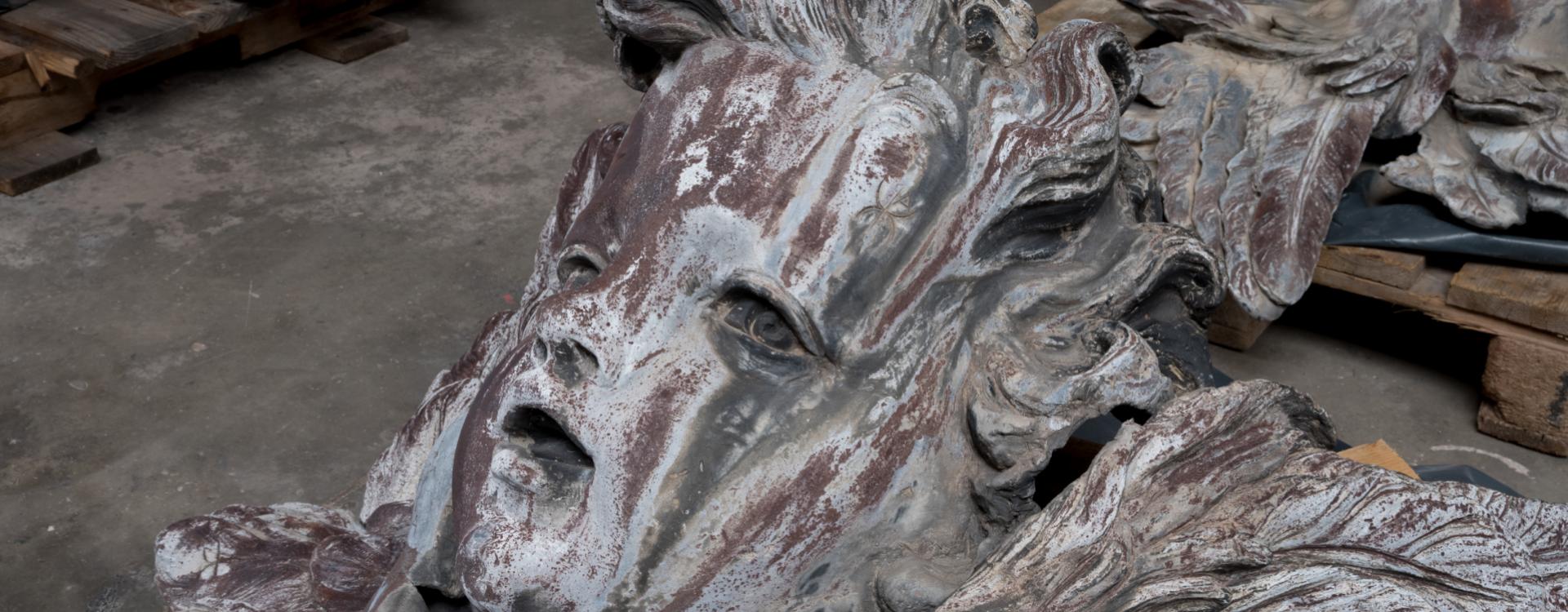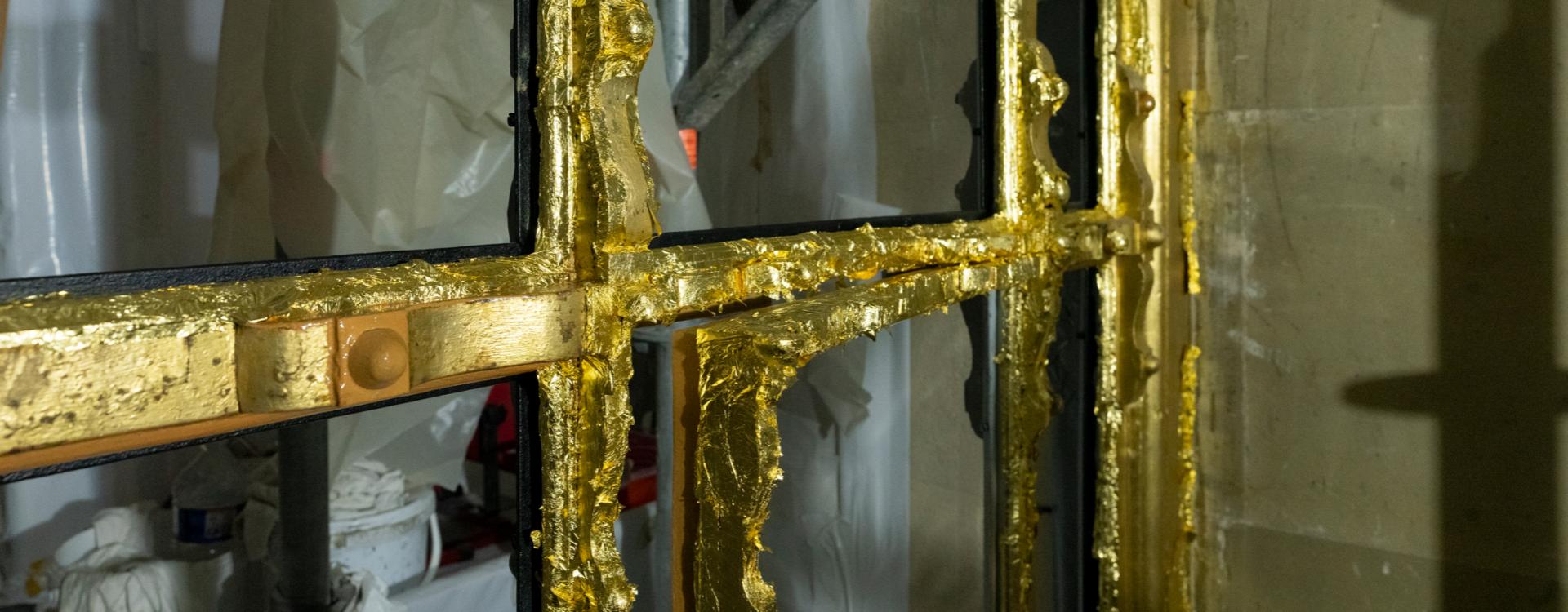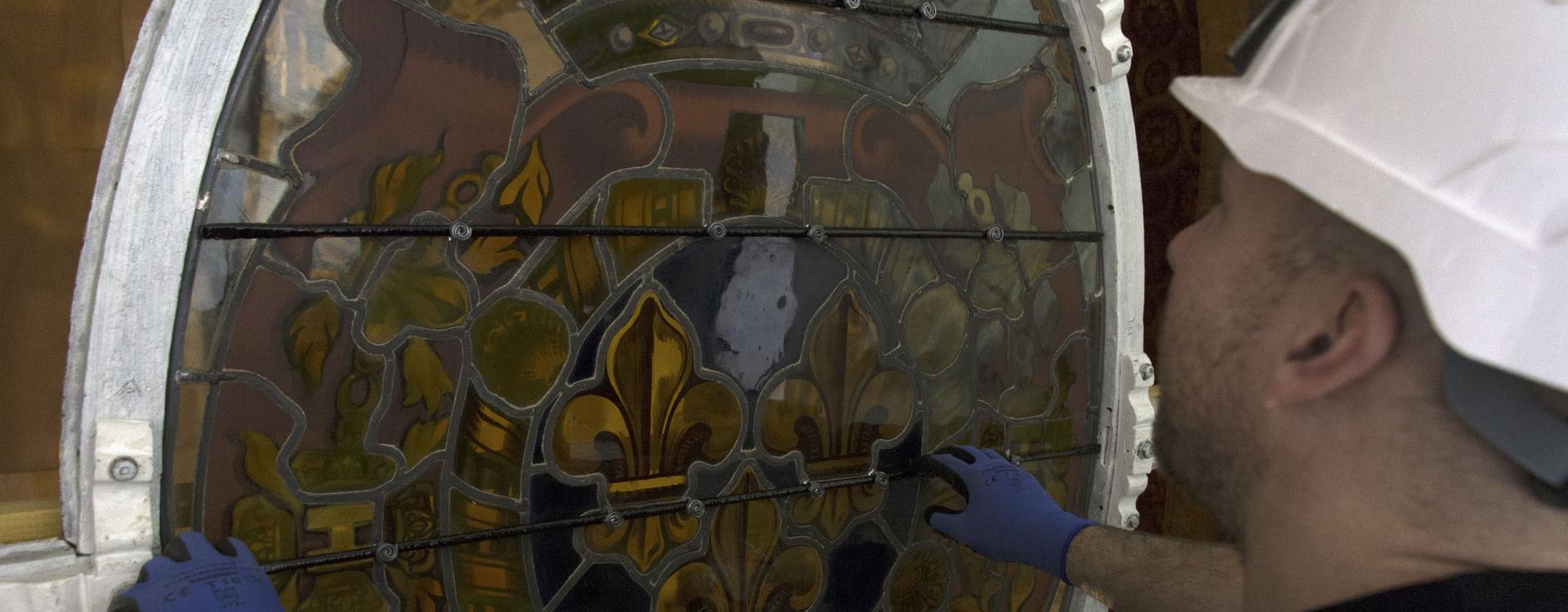They're involved at this stage
The design office
Before commencing work on a monument such as the Royal Chapel, the exact condition of the parts to be restored must be determined.
With regard to ornaments, decorative objects and sculptures made from stone, the design office examines each part in detail in order to draw up a “map”. Any signs of alteration – erosion, gaps, blistering or cracks – are labelled with a specific code on photographs of the items, which are categorised by type. Then, the previous restoration work is meticulously detailed, sometimes by comparing it with older pictures. The different phases of restoration can be identified mainly on the basis of the type of stone used each time, but also based on the presence of patches, plugs or grafts, and the stone must be identified before starting work on the site.
In this way, multicoloured maps are produced, illustrating the unknown aspects of the building. Certain bas-reliefs appear less impressive than previously thought, while the large sculptures perched on the balustrade of the Chapel reveal small defects that couldn’t be seen from the ground.
Establishing the condition of the items requires minute attention to detail and endless patience to record and interpret the slightest marks on the stone. But it also constitutes a unique journey, in both space and time, through the history of the builders.
conservators, plasterers, sculptors
Armed with these findings, instructions from their boss and the tools of their trades, they take their place at the top of the scaffolding.
Up there, 30 or even 50 metres above the ground, it’s pretty cold and, in the middle of winter, they have to spend long days next to the stone and the plasterwork. Wrapped up warmly and wearing gloves, each one is assigned to a part of the monument. Working alone or in groups, it can take them several days to set up a mini site around a bas-relief or a statue.
Each task follows a well-defined protocol, designed to respect the monument and safeguard the tradespeople. The protocol is agreed with the chief architect for historic monuments, who is responsible for ensuring that the authenticity of the original elements is preserved and verifying the appropriateness of the method used to restore the elements.
- The conservator cleans and consolidates the stone, removes earlier additions that have caused damage, fills in cracks and creates the final patina. Their experience is particularly important when it comes to cleaning the stone, which cannot be put at risk under any circumstances.
- The staff-plaster specialist gets involved periodically to create mortar casts of defective elements. These casts will then be used as models by the sculptor.
- The sculptor recreates the defective elements using new stone, which must be compatible with the existing elements. It is important for them to have a good feel for the piece in their charge so that they can adapt their actions to the style in which it was originally created. There is a fine line between art and craft, though its existence should always remain in the minds of those dealing with masterpieces.






